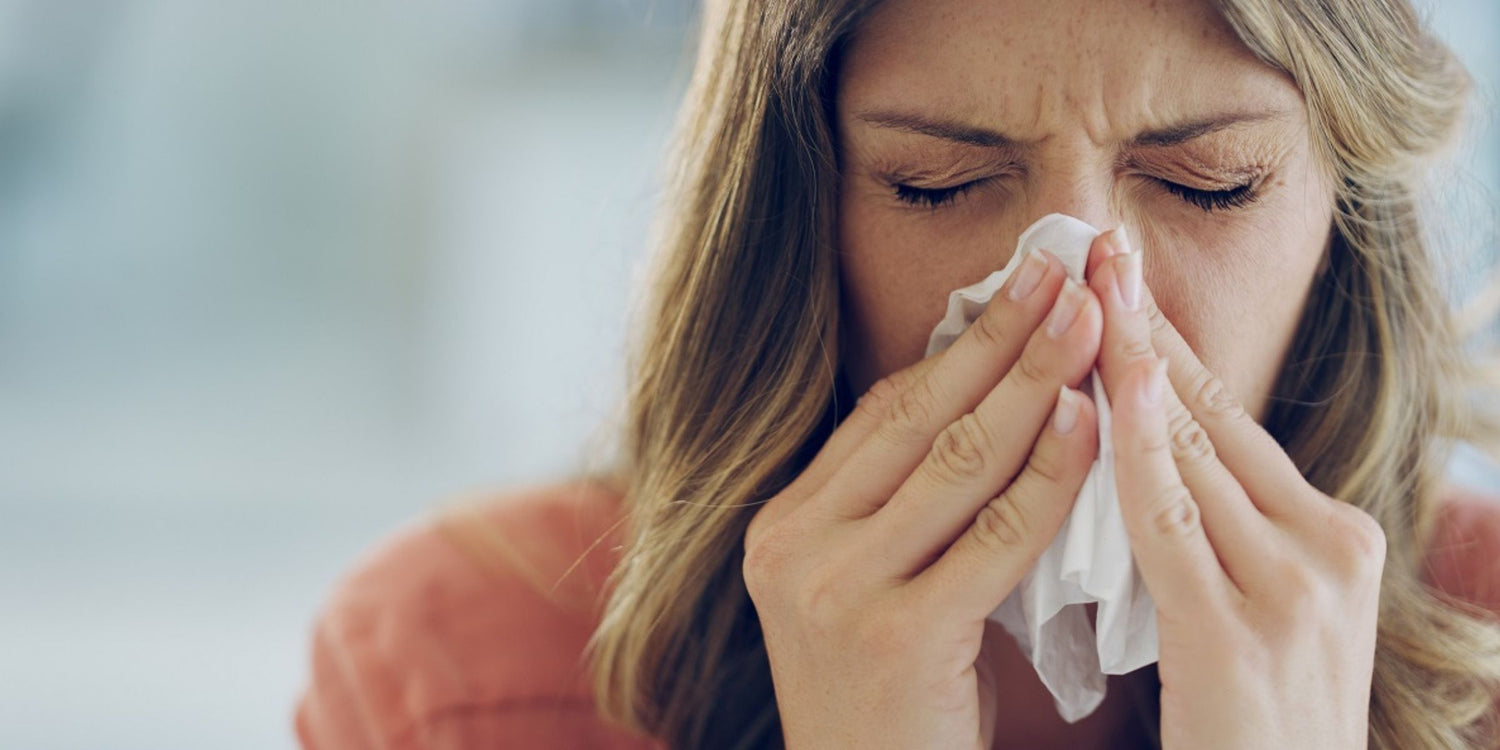What is hay fever?
Chronic sneezing, painful itchy eyes, runny nose, congested sinuses – sounds like hay fever season. Hay fever, or allergic rhinitis, is the most common allergic disorder in Australia, affecting 1 in 5 people, male and female alike.1 Hay fever is triggered by an allergic reaction to indoor or outdoor allergens such as pollen, grass, dust mites, mould spores or to tiny proteins found in the skin cells (dander) and saliva of cats, dogs and other animals with fur or feathers.1 In many people, symptoms of hay fever flare up in spring and early summer when airborne grass and tree pollen levels are at their peak. In others, symptoms occur year-round.
For non-sufferers, hay fever might seem like a trivial disease, but for a lot of people, it can be persistent, miserable and significantly disrupt sleep, energy levels, concentration and daily life.2
What happens in the body when you have hay fever?
In people with hay fever, the body overreacts to a substance it encounters through the nose and/or eyes. These substances, or allergens, are harmless to most people. If you have hay fever however, the immune system sees them as unwelcome invaders and tries to protect the body by making antibodies and releasing chemicals such as histamine. This leads to swelling and inflammation in the inner lining of the nose and causes sneezing, itching and other symptoms that can make hay fever a misery.
What about sinusitis?
Sinusitis refers to infection or inflammation of the sinuses, which can cause pain and tenderness around the cheeks and eyes, a blocked nose, headache, loss of smell and taste, yellow or green-coloured mucous and a feeling of being generally unwell. Sinusitis can be a complication of hay fever or caused by a common cold.3
Managing your hay fever symptoms
Hay fever typically requires a holistic approach when it comes to minimising symptoms and their effects on day-to-day life. This might include treatments prescribed by your pharmacist, doctor and/or specialist, lifestyle changes and supportive natural ingredients.
Lifestyle suggestions2,4
Identifying and reducing exposure to the allergen/s causing your symptoms, is an important part of managing hay fever.
For pollen
- Keep an eye on the pollen count and forecast for your region and stay indoors where possible when levels are high, especially on windy days or after thunderstorms
- Wear sunglasses when outside
- Shower after outdoor activities to rinse off any pollen you may have been exposed to
- Keep windows closed in the car and use re-circulated air when pollen levels are high
- Dry bedding and clothing inside or tumble dry
For house dust mites
- Wash sheets, pillowcases and other bedding weekly in hot water
- Try dust-mite resistant mattress, pillow and duvet covers
For pet dander
- Keep pets outside and especially out of the bedroom
For mould
- Make sure there is proper ventilation in the house, especially in the bathroom and kitchen
- Remove visible mould with appropriate cleaning products
- Use dehumidifiers in damp, humid places in your home
- Clean floors with a damp mop or rag rather than dry-dusting or sweeping
Natural support
There are also herbs and nutrients that might complement lifestyle changes and prescribed treatments and help provide hay fever relief. These include:
- Baical skullcap (Scutellaria baicalensis), olive leaf (olea europaea) and horseradish (Armoracia rusticania) found in Ethical Nutrients Sinus and Hayfever Relief, have traditionally been used in Western and Chinese medicine to reduce and relieve symptoms of hay fever including itchy eyes and eye soreness, nasal congestion, sneezing, a runny nose and to alleviate the symptoms of sinusitis. Ethical Nutrients Sinus and Hayfever Relief has been meticulously crafted using stringently sourced, premium ingredients for real results
- Vitamin C is an important promoter of a strong immune system, is involved in the metabolism of histamine and can help relieve mild allergy symptoms
References
- Australian Institute of Health and Welfare 2020, Allergic rhinitis (‘hay fever’), no. PHE 257, Canberra, AIHW, accessed 25 August 2022, <https://www.aihw.gov.au/reports/chronic-respiratory-conditions/allergic-rhinitis-hay-fever>
- Australasian Society of Clinical Immunology and Allergy 2019, Allergic Rhinitis (Hay Fever), ASCIA, accessed 25 August 2022, <https://www.allergy.org.au/patients/allergic-rhinitis-hay-fever-and-sinusitis/allergic-rhinitis-or-hay-fever>
- Better Health Channel 2011, Sinusitis, Victoria State Government, accessed 25 August 2022, <https://www.betterhealth.vic.gov.au/health/conditionsandtreatments/sinusitis>
- Better Health Channel 2022, Hay fever, Victoria State Government, accessed 25 August 2022, <https://www.betterhealth.vic.gov.au/health/conditionsandtreatments/hay-fever>




